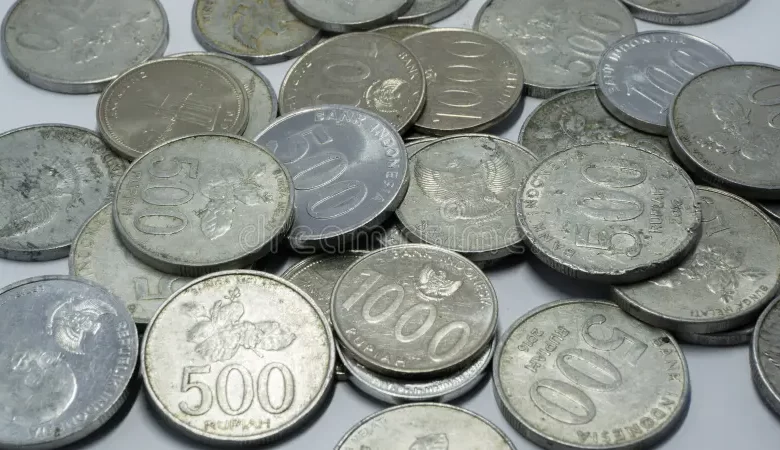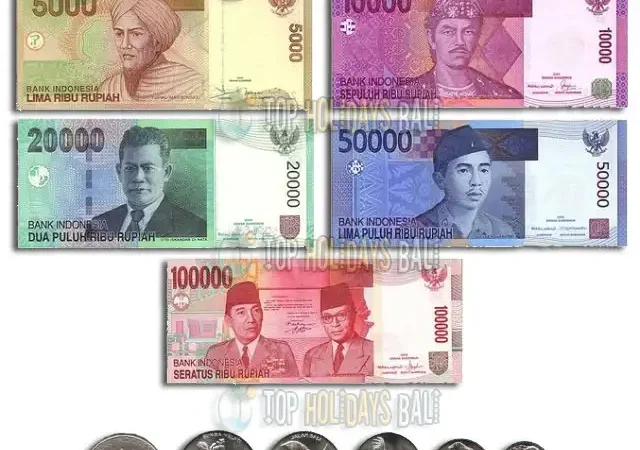What coins are in Indonesia?
The official currency of Indonesia is the Indonesian Rupiah (IDR). There are several different denominations of Rupiah coins in circulation in Indonesia, including:
- 100 Rupiah (Rp100): Due to their limited value, these little aluminum coins are rarely used in regular transactions.
- 200 Rupiah (Rp200): They have extremely limited purchasing value and are thus hardly used, much as the 100 Rupiah coin.
- 500 Rupiah (Rp500): These coins have a little greater value and are more frequently utilized for tiny transactions.
- 1,000 Rupiah (Rp1,000): Because it is more often used and has a larger value, this coin is appropriate for modest transactions.
- 5,000 Rupiah (Rp5,000): The 5,000 Rupiah coin has a notable value for coins and is comparatively bigger and heavier.
Although lesser denominations such as the 100 and 200 Rupiah coins are theoretically in circulation, in fact, they are rarely used, and transactions are usually rounded to the next 500 or 1,000 Rupiah. Paper currency is used for the majority of routine financial transactions.
Indonesian paper currency is available in the following denominations: 1,000, 2,000, 5,000, 10,000, 20,000, 50,000, and 100,000 Rupiah.

Advantages and Disadvantages:
The use of Indonesian coins is dependent on a number of conditions and has both benefits and drawbacks. The following are some benefits and drawbacks of coin use in Indonesia:
Advantages:
- Small Transactions: Coins can be used for purchases when paper banknotes might not be required, and they are useful for little transactions.
- Durability: Coins can endure abrasion and are generally more resilient than paper money, allowing them to be in use for extended periods of time.
- Exact Change: Coins make it easy to prevent overpaying or getting the wrong change by enabling accurate change in transactions.
- Collectibles: Some individuals collect coins for fun, and numismatic collections may include Indonesian coins.
- Cultural and Historical Significance: Coins frequently include pictures and symbols on them that stand for a nation’s history and culture. They could represent a country’s identity.
Disadvantages:
- Low Value: The low value of many Indonesian coins (such as 100 or 200 Rupiah) makes them less useful for regular purchases. For convenience, they could be disregarded.
- Bulkiness: Having a lot of coins might make carrying them heavy and make wallets and pockets heavier.
- Limited Acceptance: Certain transactions may not always take coins, particularly in metropolitan locations. You can round prices to the closest denomination of cash.
- Inconvenience: When it comes to bigger purchases, counting and handling coins might be less convenient and time-consuming than utilizing banknotes or electronic payment options.
- Hygiene: Because coins are regularly exchanged hands, they might be less sanitary, which raises questions about cleanliness—especially when it comes to health issues.
Like many other nations, Indonesia prefers to utilize paper banknotes for major purchases, although coins are more frequently used for smaller, everyday transactions. Coin acceptability and usefulness might change based on a person’s tastes and region. Furthermore, the government and central bank may choose to gradually phase out or alter certain coin denominations, which may have an effect on how they are used.

why famous:
Although Indonesian coins are not very well-known outside, collectors and the country’s population value them for their historical, cultural, and numismatic importance. For the following reasons, Indonesian coins may be noteworthy:
- Cultural Significance: Indonesian coins frequently have pictures, motifs, and symbols that pay homage to the nation’s rich cultural past. The nation’s identity is reflected in the coin designs, which may feature images of historical sites, indigenous artwork, national heroes, and scenic landscapes.
- Historical Value: Coins are occasionally used as historical relics. Numismatists and collectors may be interested in older or discontinued Indonesian currency denominations for historical reasons. They could give light on the political and economic developments of the nation.
- Collectibility: International coin collectors and numismatists could be interested in adding Indonesian coins to their holdings. In the collector’s market, certain coins—especially those with distinctive designs or small mintages—may become highly prized.
- Economic Utility: Some currency values, such 1,000 and 5,000 Rupiah, are still in use and are crucial for providing change for minor purchases, even if lower-value coins, like 100 and 200 Rupiah, are not frequently used for daily transactions.
- Hybrid Materials: Certain new materials and technology are used in several Indonesian coins. Certain coins, for instance, may include security elements to prevent counterfeiting.

In the context of Indonesia’s culture, history, and economics, Indonesian coins are valuable and significant even if they may not be as well-known outside as those of certain other nations. They may also make fascinating treasures for coin aficionados and numismatists.




